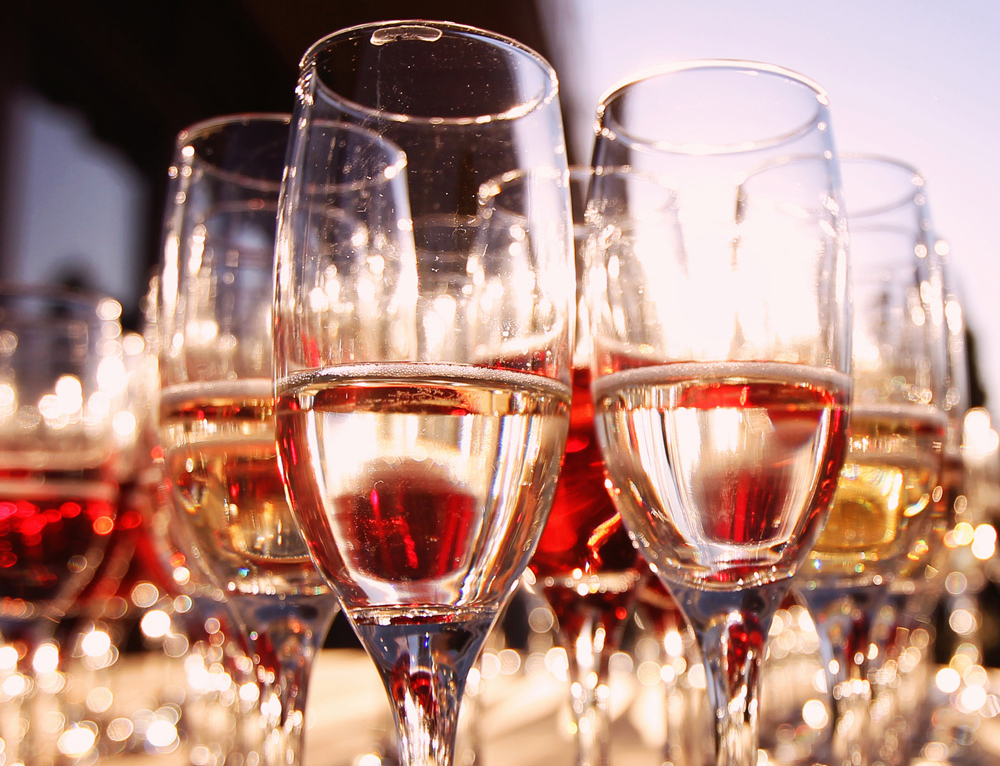So you’ve decided to throw a party, and you know that you want to serve wine, but where do you start? What kind should you get? How much should you buy? This guide will help you answer these questions so you can check ‘wine’ off your to-do list.
What Kind of Wine Should I Buy?
Different people have different tastes in wine, so you should have a variety of styles on hand – the trick here is to not overwhelm the food. The most basic variety would consist of one red and one white option. You can add multiple styles of each, or include a sparkling, rosé, or sweet option. Below are a few configurations that work well in most situations.

Option 1: One Red and One White
Red: Most people who drink red wine think of themselves as having a preference for full-bodied, dry styles. Your wine shouldn’t be too sweet, tannic, acidic, or light (remember, try and not overwhelm the food). New World style wines are a safer bet than Old World, as they tend to be made in a softer, more approachable style with less tannin and acidity. Merlot or Cabernet from the US or Australia would be great choices.
White: If you only have one white wine, it should be dry, but not too acidic or unusual. Chardonnay from California and Pinot Grigio from Italy are both excellent choices. People often prefer wines that they are already familiar with, so if you have a limited number of options, you should avoid wines that are obscure or unusual in their flavor.
Option 2: Two Reds and Two Whites
Red #1: This option should be the same as discussed above: New World style Merlot or Cabernet.
Red #2: Try a lighter-style, dry red like a Pinot Noir from Burgundy or Oregon.
White #1: The same suggestion as above: Chardonnay or Pinot Grigio.
White #2: A dry, aromatic wine like Sauvignon Blanc from New Zealand, or the Loire Valley in France.
Additional Wines That Could Be Added to Either Option Listed Above
Sparkling: Some guests might enjoy a sparkling wine. You might also want one if you’re celebrating for a birthday or anniversary party. Unless it’s a really special occasion where you want to serve Champagne, you should go with Prosecco from Italy or Cava from Spain. They are both really enjoyable and more economical than Champagne.
Sweet wine: Depending on the group of guests, you might like to have a sweeter option on hand as some people do not enjoy dry wine. A few possibilities here include Moscato from Italy or Riesling from Germany.
Rosé: If you’re having a party in the summer or know that some of your guests enjoy rosé, having a few bottles on hand is a nice touch. Try a rosé from the South of France – Provence, for example, produces great rosés at great prices.
How Much Wine Should I Buy?
This is a popular question, so we came up with an easy equation. While it may not be perfect, we use this to find out a general number of how many bottles are needed. We then associate red or white accordingly, depending on the time of year and predicted preference of the guests’ tastes.

Our calculation is based on a few assumptions:
One standard-sized bottle (750ml) contains 4 glasses of wine. Which is where the ‘4’ comes from in the equation.
Generally, people can be expected to have a glass per hour. This will largely depend on if you are serving other drink options at your event, but in general, some people will have more than one glass, and others won’t drink wine at all, so it tends to even out.
Example A: Eight guests for a three hour event
8 guests divided by 4 = 2. Multiply that 2 by 3 (the number of hours) to get the answer of 6 bottles.
Since there are 4 glasses of wine in a bottle, this brings us back to the conclusion that if each of your guests consumes one glass of wine per hour you will need 6 bottles total (24 glasses). Depending on their predicted tastes, you can then decide to buy red, white, rosé, or sparkling wine.
Example B: One hundred guests for a two hour event
100 guests divided by 4 = 25. Take 25 and multiply by the number of hours, 2, to get your answer of 50 bottles.
So again, if you want to check your work, go back to the assumption that, in general, guests tend to consume 1 glass of wine per hour. So if you have 50 bottles of wine, and there are 4 glasses in each bottle, you would multiple 50 by 4 to get 200 glasses of wine, breaking down to each of your 100 guests having one glass per hour for two hours.
Now that you have the tools, you’re ready to plan the perfect party! Want advice on serving wine to your guests? Check out our Tips & Tricks on Serving Wine blog. And if you’re looking for wines shipped directly to your door, visit us at WTSO!



